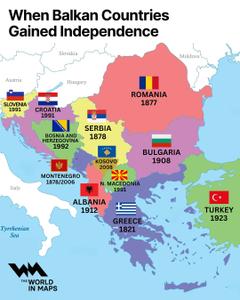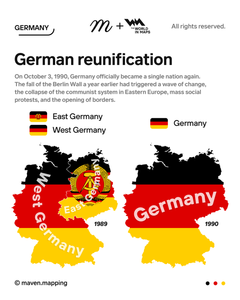history
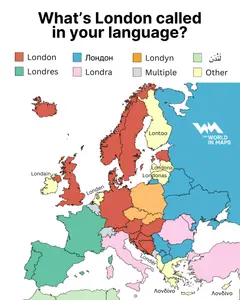
Maps / 1 week ago
A look at Europe’s many linguistic versions of London
A new linguistic map by The World in Maps shows how the name “London” changes across Europe. While English speakers know it simply as London, its name takes different forms depending on the language. In France, Spain, and Portugal, it appears as Londres. In Italy and Romania, it becomes Londra. Across Poland and Czechia, it’s Londyn and Londýn, while in Finland it’s Lontoo. Greek speakers use Λονδίνο, and in Welsh, the city is known as Llundain.
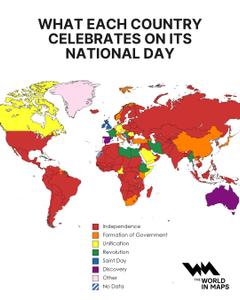
Culture / 4 weeks ago
What countries celebrate on their National Days
National days are more than holidays as they reflect how nations define their own identity. A new world map breaks down the reasons countries celebrate their national days, whether it’s independence, revolution, unification, the founding of government, or even a saint’s feast. Red marks countries that commemorate independence (the largest category). Orange shows nations that mark the formation of government. Yellow indicates unification moments, green reflects revolution, blue for saint days, purple for discovery, and pink for other reasons or when the reasoning doesn’t fit neatly into those categories. The striped pattern indicates where no data is available.
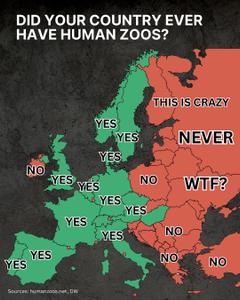
Culture / 4 weeks ago
Did your country ever host a 'Human Zoo'?
Between the late 19th and early 20th centuries, several European countries hosted what were known as “human zoos.” These were public exhibitions where people from colonised regions — particularly Africa, Asia, and the Pacific — were displayed for entertainment under the guise of education or anthropology.

Business / 7 weeks ago
5 oldest continually operating companies that are still thriving
In today’s fast-paced business world, where many startups struggle to survive beyond five years, there are a few remarkable companies that have been operating for centuries, even more than a millennium. These businesses have weathered wars, plagues, economic collapses, and technological revolutions, yet remain relevant. Here’s a closer look at five of the oldest continually running companies in the world, verified by World Atlas.

Maps / 9 weeks ago
Explore the world's longest streets
A snapshot from World Visualized highlights the globe’s longest urban thoroughfares, ranking Yonge Street, Western Avenue, Avenida Rivadavia, Sunset Boulevard, and Broadway in descending order of length. In this engaging news feature, we delve deeper, combining the infographic with trusted insights from Civitatis to take you on a street-by-street worldwide tour.
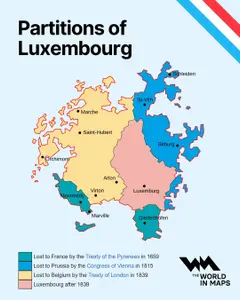
Maps / 10 weeks ago
The three historic partitions that shrunk Luxermbourg
Luxembourg may be one of Europe’s smallest countries today, but it wasn’t always so little. From 1659 to 1839, Luxembourg was shaped by powerful neighbours: France, Prussia, and Belgium. The Treaty of the Pyrenees concluded the long-running Franco‑Spanish War and marked the rise of France as a dominant European power. Spain gave up key fortresses like Montmédy, Stenay, and Thionville to France after this treaty. Luxembourg lost roughly 1,060 km², or 10% of its territory, too.
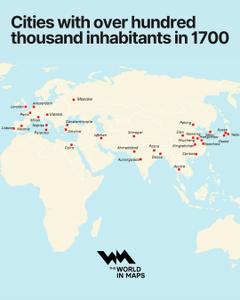
Maps / 11 weeks ago
The world’s biggest cities in 1700: Where people lived before the industrial revolution
A fascinating historical map by The World in Maps reveals the global distribution of cities with more than 100,000 inhabitants in the year 1700. Long before skyscrapers, subways, and megacities, these urban centres were the beating hearts of empires, trade networks, and cultural exchange. In Europe, cities like London, Paris, and Amsterdam were rapidly rising as hubs of trade and colonial expansion. London had around 575,000 people, while Paris was close behind with roughly 500,000.
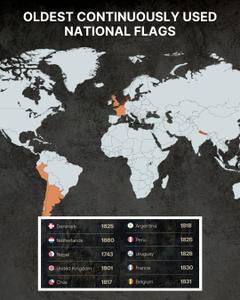
Maps / 13 weeks ago
